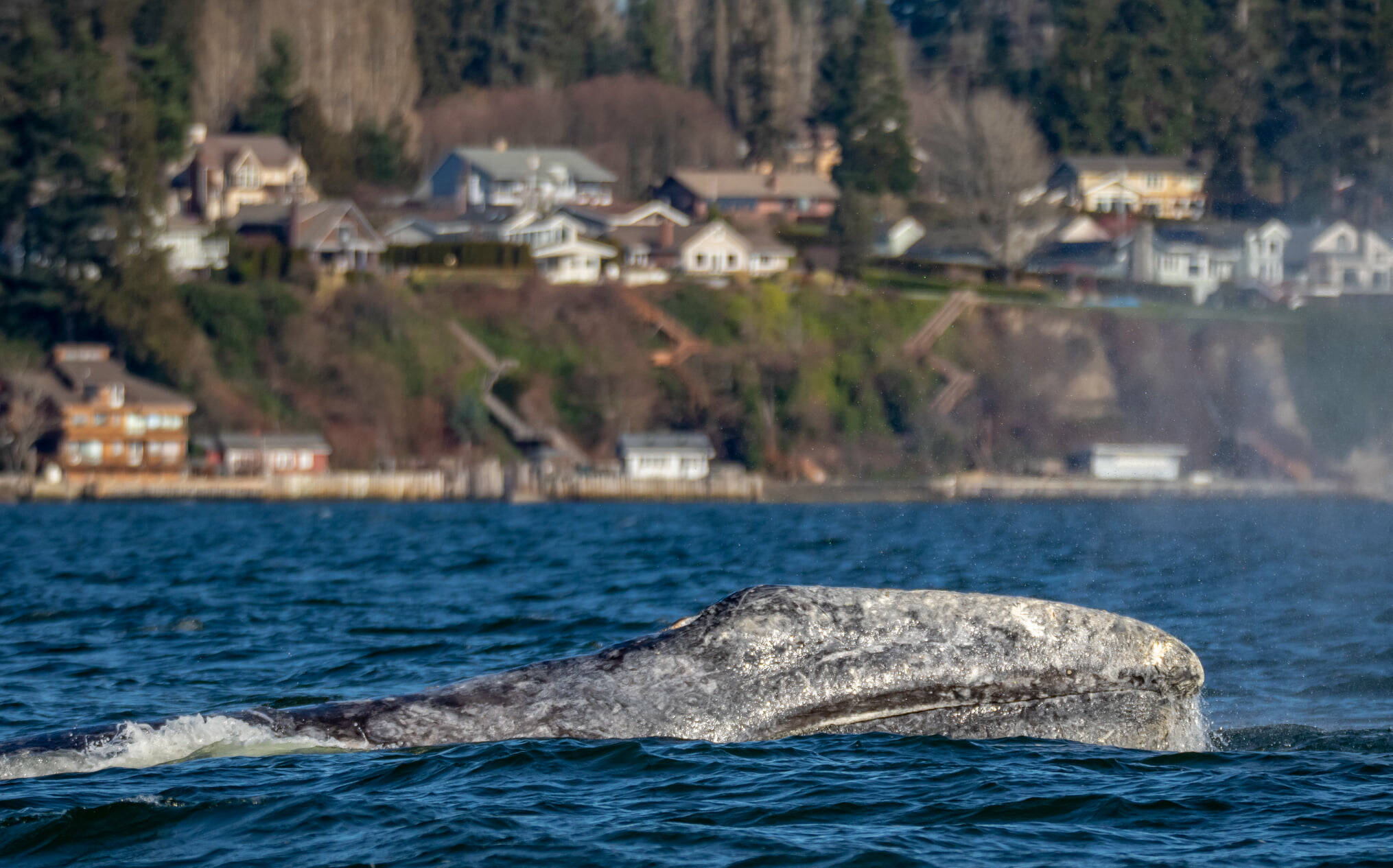Some of Whidbey Island’s biggest friends are back in town.
Four gray whales have been spotted in the Whidbey Basin in recent weeks. According to local whale-watching experts, these early arrivals are harbingers of the rest of the “Sounders,” a group of around a dozen gray whales that have stopped by Whidbey every spring for the last three decades.
A Feb. 17 whale sighting report from the Orca Network stated volunteers from the organization saw North Puget Sound gray whale 56 near Whidbey Island on Feb. 10, the earliest date on record for his annual springtime visit.
Another regular, a female known as Earhart or CRC-22, first arrived in early January and was last seen in Possession Sound.
A third Sounder called CRC-53 or “Little Patch” was seen with 56 in the upper reaches of Saratoga Passage. Alisa Lemire Brooks, Orca Network’s whale sighting network coordinator, said Little Patch was first spotted in the area this season on Dec. 7, 2021.
The Cascadia Research Collective also identified a fourth whale in the area. Team members had not released the whale’s identity as of Thursday evening, though according to Lemire Brooks, the fourth whale is a new Sounder who first made the detour into the Whidbey Basin last season.
Mid- and late-winter appearances such as these aren’t common among this gray whale population, though they have been happening more frequently in recent years. Little Patch is often one of the first gray whales to reach the Whidbey Basin — he was spotted in December 2020, too — but the Sounders typically begin arriving in March and stay through late May.
“This year’s been a bit unusual in that we’ve had several that arrived pretty early,” Lemire Brooks said. “It’s becoming more normal for them.”
Changes in food availability in the Sounders’ other feeding grounds may be one reason for some group members’ early arrival. In 2019, the National Oceanic and Atmospheric Administration declared an “unusual mortality event” among gray whales up and down the coast that is still ongoing. Lemire Brooks said the gentle giants are becoming emaciated or dying during migration from lack of food.
Typically, the Sounders stop by the Whidbey area during their migration northward. Extremely early arrivals such as Little Patch, however, may indicate that some whales did not have enough food to sustain them on their journey south. These may have forgone the migration altogether, preferring instead to feast on the Whidbey Basin’s plentiful ghost shrimp.
“They haven’t pinpointed a specific reason, but it’s definitely food, prey-based,” Lemire Brooks said. “They’re just going into other places looking for food, and some of them luck out, and when they come in here, they turn left and go up into the Whidbey Basin.”
As more gray whales turn to the Whidbey area for sustenance, there may be an increase in the number of regulars who frequent the area. Since the beginning of the mortality event, more “stragglers” from the gray whale population who can’t complete the migration come to the Salish Sea to feed. Lemire Brooks said newcomers can learn the local feeding technique from the regulars.
The Whidbey Basin has seen a similar increase in visitors during other unusual mortality events that have taken place over the past thirty years.
An estimated 25% of the gray whale population has died during this mortality event, Lemire Brooks said, but the deaths are starting to wane.
The whale visitation season is expected to peak in mid-April. The Langley Whale Center plans to host its annual “Welcome the Whales” festival on April 23 and 24.



